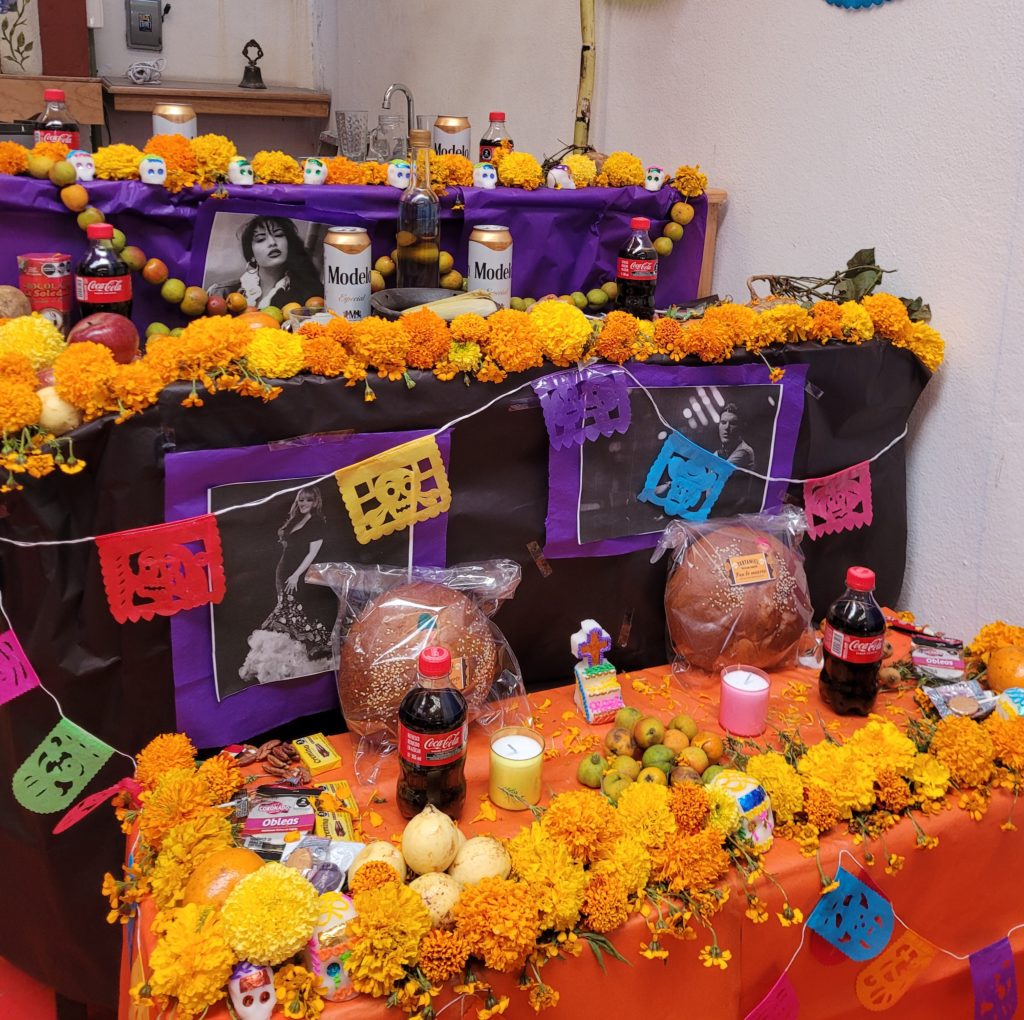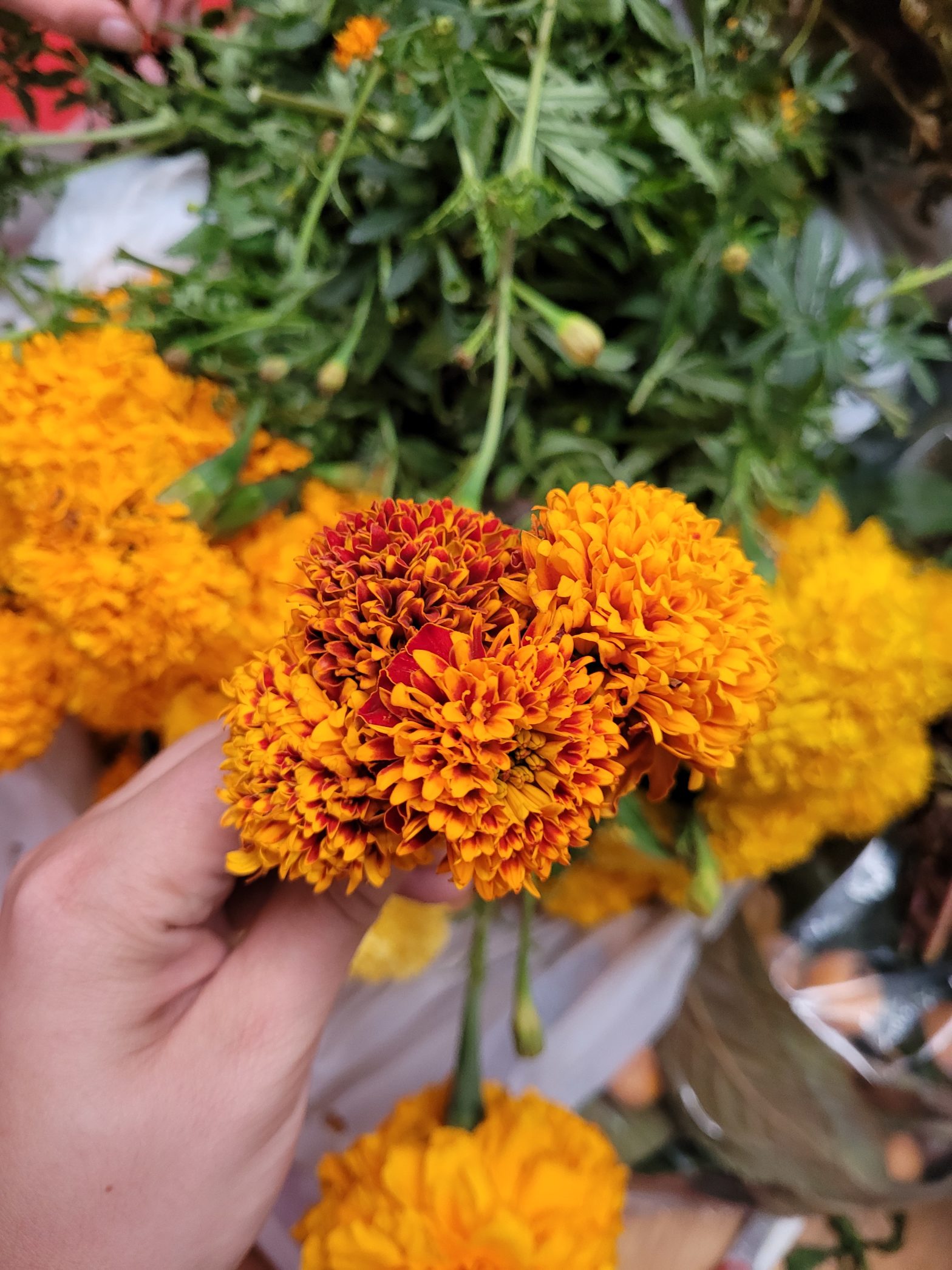One by one, we place the cempasúchils, mezcal, fruit, and more that serve as offerings and guides to los difuntos (loved ones that have passed). Alongside my host mom, we complete the final steps of lighting the candles and burning copal and the ofrenda is complete! El Día de Los Muertos is a special season in Mexico that celebrates the life of late loved ones, and the ofrenda (altar) that honors those lost is at the heart of it. However, I couldn’t help but ask, where did this tradition come from?

What is the story behind the holiday?
El Día de Los Muertos is an example of the syncretism of prehispanic traditions and Catholocism that occurred as a result of colonization. Many of the original peoples that reside in Mexico celebrated the reaping of the harvest this time of year. Creating altars of corn, beans, and other harvested goods to thank the gods for the food provided to them. More so, it was not uncommon to create altars (tzompantli) for their dead using the skulls and bones of the people who passed. On the Catholic side, All Saints Day also resides this time of year, with altars full of pictures/iconography of the saints, candles, and more.
Over time, these two traditions collided to create the ofrendas as they are known today. Covered in photos, candles, cempasúchils, bananas, tamales, candy, copal, mezcal, and more, they look truly like a blend of the two traditions. Depending on where you are, variations in the ofrendas can occur. Southern Mexico, such as Oaxaca, being home to a wide variety of original peoples, proudly displays ofrendas focused on harvest items, calaveras, and all things related to the prehispanic traditions. The opposite is true of Northern Mexico where the pull of Catholicism is stronger.
(Please take note, this is the version I learned from my school and several other versions exist)
Ok, but what is the story behind the offerings?
Every item on the ofrenda serves a specific purpose. The cempasúchils serve as a guide to los difuntos, providing them a path back to their family. Photos are crucial, as they signify the family still remembers and celebrates your life. Candles and copal (incense) are links to Catholocism and serve as indicators of remembrance. Salt and water work as methods of purification. Milk, hot chocolate, coca-cola all serve as refreshments from the long journey, while beer and mezcal are to celebrate. Candies function as a treat for the kids and food is for nourishment (as well as to party!). More so, the calaveras (skulls/skeletons), made of sugar or chocolate, are a direct link to the building of tzompantli (soam-pahn-tlee). Safe to say, space on the ofrenda is limited and the dedication to serving loved ones, strong!

( and…¿Avicci?)
With the passing of the holiday, the ofrendas are taken down. The faulty taste of many of the fruits, nuts, and tamales; the disappearance of mezcal, water, and milk; and the wilting of flowers all serve as reminders of the loved ones who made the journey to return. How beautiful it is to celebrate life and not simply mourn it, no?



